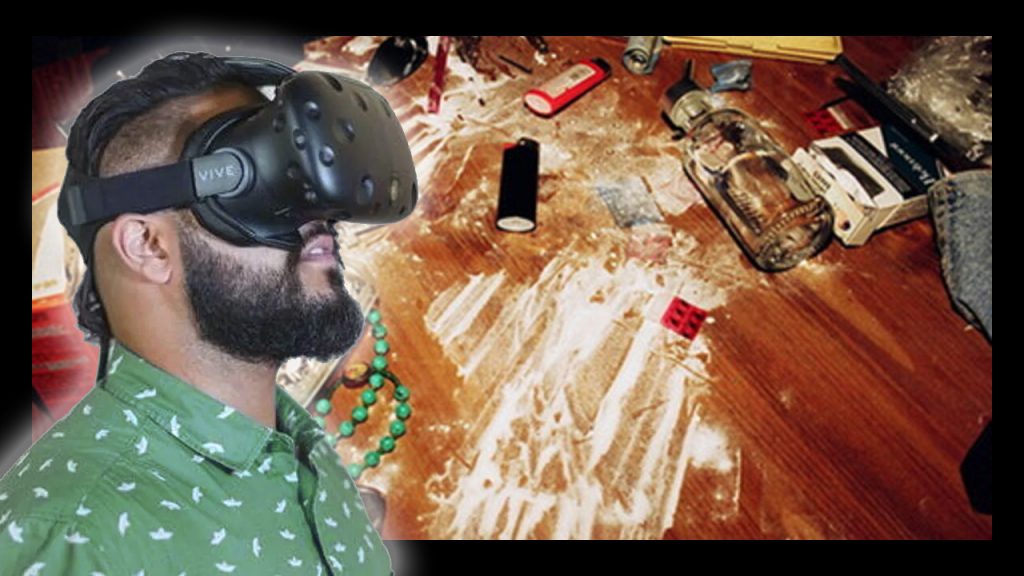DRIM
Drugs Immersion for drug abuse treatment, prevention and screening paths

Drugs Immersion has multiple applications and responds to different needs in the CARE, PREVENTION and SCREENING paths concerning the theme of USE, ABUSE and DEPENDENCE ON SUBSTANCES and / or ADDICTION BEHAVIORS.
It is a virtual environment of intense “reality” in which the subject can move, interact, make choices and evaluate the consequences of his/her behavior.
A playful, pleasant and interesting environment is represented in which the subject can move, immerse himself, stimulated by visual, auditory and olfactory stimuli.
The multi-sensory stimulation allows to have a very engaging experience, which can be fully assimilated to a real situation.
During the exposure the subject will be able to experiment and be solicited in order to compare with the various substances of abuse (cannabinoids-cocaine-heroin-alcohol) and addictive risk behaviors such as GAP (pathological gambling).
He will feel invited to “try them” and then he will ‘confronted’ with the possible consequences, (of which the vast majority of subjects are not aware). He will be urged to make alternative choices and will be able to evaluate their impact in his/her internal and external way of functioning.
For the entire period of exposure in the virtual environment, the subject will be followed and monitored by the therapist who on the basis of the responses and changes in physiological parameters, such as heartbeat, breathing rate, blood pressure, etc. will have a rich and current material. At the end of the VR session, he will be able to compare collected data and discuss them with the subject.
The strength of this tool lies in the possibility of deepening the sensations, thoughts and anything else the subject has experienced in the VR environment, immediately, without having to rely on a report or on past stories.
The experience and, above all, its re-elaboration with the therapist, practically immediate, allows
- an accurate assessment of the real risk factors
- a screening on selected population targets
- evaluation of the presence of a pathological addiction
- the most appropriate treatments for the case
Lastly, it significantly raises the subject’s awareness of the topic.